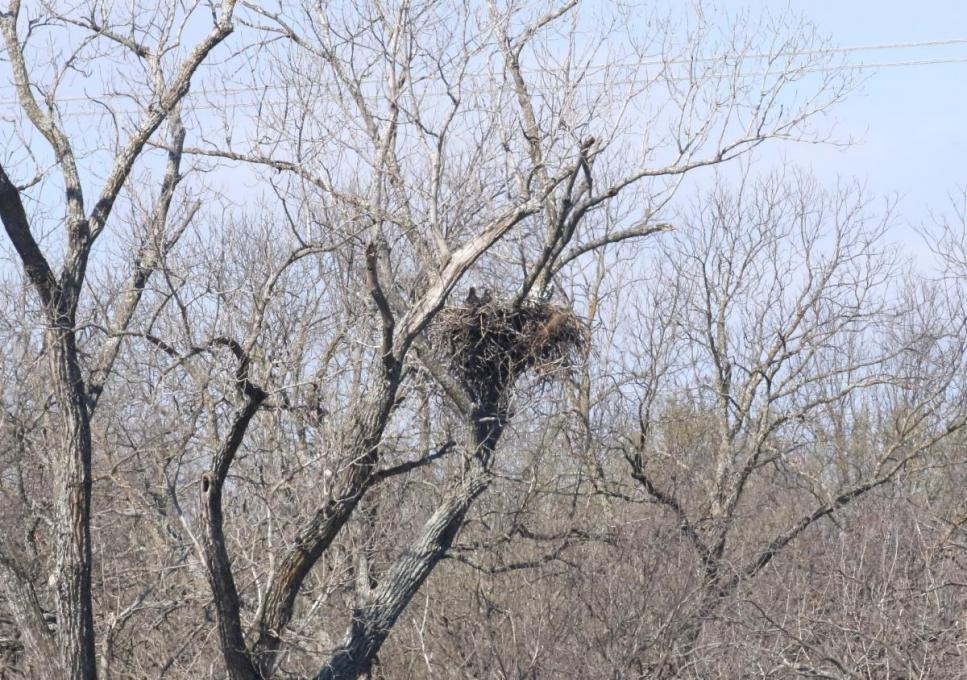The Cornell Lab Bird Academy › Discussion Groups › Growing Wild: Gardening for Birds and Nature › Joys of Naturescaping
-
I just really enjoy being outside both in winter and summer whether it is in my yard or the big outdoor yard of nature. My back yard has many vegetable garden boxes which I love tending. I also have an evergreen, mountain ash, chokecherries and native roses, snowberries and silver willow bushes, a fire pit and flower pots. This is all packed in a medium sized city yard. I am happy with my back yard. I don't sit in the yard that often but enjoy working in puttering. My front yard has a dogwood and two evergreens but the rest is grass which I don't tend very well. A couple of years ago I made two garden boxes and filled them with native plants and seeds. I would like to grow more native plants in my front yard as the grass does not provide any diversity for wildlife. Merlins. Robins, House Wrens, migrating sparrows, Juncos, House Sparrows, Cedar Wax Wings, Chickadees, Nuthatches, Northern Flickers, Grackles and Crows are some of the birds I see in my yard along with mice, jackrabbits and squirrels. Generally I see them foraging for food and robins, sparrows and wrens will nest in my yard if there are not a lot of Merlins around that year. I feed the birds i the winter both seeds and suet. Birds and squirrels come for the fare. I would like to bring more insects, butterflies, bees and birds into my yard by changing what I plant and grow providing a suitable habitat as many species are losing more and more of their habitat.
-
We bought a house in Lake Arrowhead, CA and live there half the week to be closer to nature. Our house is surrounded by huge conifers and black oaks, but unfortunately we lost 10 huge trees during a big storm, which also means fewer birds are visiting. We want to be mindful and intentional in what we plant to replace the trees, especially since it will take decades for anything to mature to what was lost. Not only with trees that we plant, but native shrubs and smaller trees as well. We also have a seasonal creek, and are curious to see how things evolve throughout the seasons. Right now we have a lot of Steller's Jays, Red-Winged blackbirds, Northern Flickers and occasionally Eurasion Collared Doves. We had hawks and falcons who would visit in the big trees before they fell, and are hoping they'll come visit us again.
-
We started converting our existing garden to Natives last year and any new gardens like this one has been Natives only. We have seen a huge increase in biodiversity in our yard. From birds to insects, reptiles and mammals. It has been fascinating to watch them all come in. We also have a very difficult task or removing many non-native invasive species in our yard that have created monocultures in are surrounding woodlands and lawn. Our dream is to recover our entire property and then slowly start removing the non-native invasives in the surrounding woodlands. We put this Native hellstrip in, in late spring/early summer of 2021. This year during our extreme heat and drought we witnessed a number of things we’d like to reassess this fall and winter. However, most of the plants thrived regardless of these factors. This picture is from this year about mid summer.

-
Beautiful. This is something I would like to get to in my yard. Of course "seeing" ahead a couple of years is difficult. And learning the native species is challenging. We also have wind at various times off the mountains... 30-40 mph !
-
-
My husband and I purchased our first home near Albany, NY early this past spring, on about 1.8 acres in a suburban area, with a lot of development in one direction and a nature preserve in the other. We decided to hold off on doing more than basic maintenance to the yard and property for our first year - partially out of necessity (the house itself was in relatively dire need of some love) and because we could tell the yard contained some mature garden that we knew nothing about from the previous owners, who lived here for the last 70 years and clearly cherished their outdoor space. The time we were able to spend outdoors has been occupied enjoying the front porch, and the feeder and bird bath I've put nearby, and having the occasional fire in the backyard. I mowed the grass areas (sporadically), and my husband waged war against the oriental bittersweet that had grown to horrific proportions and was threatening many mature trees on the property. I spent a lot of time on iNaturalist learning about what was already growing on the property, and unfortunately it appears that much of it is non-native, and worse, some is invasive. All is very overgrown. Our goals for next year are to establish a small vegetable / herb garden, and to begin the slow and gradual process of reclaiming or completely re-doing the gardening and landscaping on the rest of the property. There is a steep bank that leads down to a seasonal stream bordering one side of our yard, and another steep section in the back drops off to a small creek and marshy area. It's currently almost impossible to physically access either due to dense growth of bittersweet, invasive honeysuckle, buckthorn and some poison ivy, but I'd love to be able to clear a small space to sit and birdwatch in these areas. I read a bit about permaculture and decided to try starting from the areas nearest the house and work outward; this will also allow me to prioritize permanently removing the wisteria and English ivy that has decided to try and grow inside, as opposed to outside, the house. I'm hoping this course will help me learn how to incorporate native plants that will attract and provide for more birds, especially hummingbirds, and develop a long-term plan for the property that will be reasonable to maintain and supportive of the local ecosystem. I imagine I will be revisiting the course material MANY times over the coming decades!
-
I have slowly increased the planting of natives around the house and am slowly expanding with annual flowers and perennials. I have loved seeing the increase in birds. Small puddles in areas I have laid a tarp to clear vegetation, have attracted even more birds for the water. I make sure to keep the puddles present. I want to make the backyard full of trees and flowers and other natives that not only attract birds, but make the space a natural and friendly environment for men too :)
-
I love to sit on my patio and enjoy morning coffee, meals throughout the day and drinks in the evening with friends! We have many cardinals, robins and goldfinches in our yard. I've always put annuals in the patio space for looks but am very intrigued to put native plants in instead to attract birds and butterflies!
-
I began gardening in the PNW about 20 years ago. My MIL was a rose fanatic so I wanted that too. I have about 50 or so now. I also focused on just beauty without thinking about birds, bees, and wildlife. And yeah, it’s like park out there. But then I retired and started thinking about birds and how I could support more wildlife. I haven’t been focusing on natives AT ALL. So what I want to change is just that. I will identify the few natives that I have (a snowberry for sure) then try to figure out where I can put some others. I do have a lot of birds-chickadees, towees, wrens, woodpeckers including pileated, downy, and flicker. Robins, warblers, sparrows, junkos, and hummingbirds. I have recently started mulching with natural woody chips and I can already see birds preferring to hop around these beds and not so much just the feeder. Where you see the rock wall is where I lost a huge hemlock tree. It was a sad day when that came down as it displaced so many birds. I replaced it with a parrotia (not native) and the kousa dogwood. The native dogwood in the back is my neighbors and provides for some of what mine lacks. I would love to see more waxwings.

-
Your backyard is beautiful! I can see how it would bring you much joy!
-
Beautiful!
-
Lovely!!
-
-
I saw, on an Ebird photo, and orange slid over a branch. Like in this photo. And I learned, from this course, that water is more important than seeds, relatively. I installed 2 water baths, and 1-2-3, seed feeders. I saw, 6 American Goldfinches, all together, last week. And a male and female Cardinal, together, almost 5 times in the past week. This method, is more educated, than, say, putting a huge amount of seeds, and little/no water.

 thx. bjorn k.
thx. bjorn k. -
We moved to Fort Collins, CO from Texas six months ago. I have been taking a wait-and-see approach to the garden. We have terraced beds on the north side of the house that will be a challenge, as half of the beds are in shade most or all of the day. I'm hoping to identify native plants that will do well there. One of the beds gets a lot of morning (and some afternoon) sun, and I plan to put a birdbath there with a solar fountain, surrounded by flowering plants to attached butterflies and (I hope) hummers. I look forward to the challenge!
-
I live in a suburb northwest of Edmonton, AB, Canada. My front yard faces North and my bird feeder there brings in chickadees, nuthatches and downy, and pileated woodpeckers as well as the occasional flicker. My yard has no trees, but the neighbours’ trees which are tall spruce, ash and elm seem to bring the birds to the area. I would love to remove our front lawn and replace it with mainly low maintenance evergreen species, complementary native plants and shrubs to provide cover, nesting habitat and natural sources of food. My backyard, facing south, is where we spend all our time enjoying our deck, watching the birds at the feeders and bird baths and playing with the dogs. We recently put in some raised vegetable beds at the back of the yard where I also have a small very productive Evans cherry tree, a couple grapevines growing along the chainlink fence and a couple haskap bushes that the birds eat all the berries off before I manage to harvest any. The rest of the yard is lawn except for the entire east side along the fence which previously had a garden of perennials I had planted including a beautiful dropmore honeysuckle which attracted hummingbirds. Unfortunately, this farden has been overun by quack grass and so most of plants I put in have been strangled out. Ideally, I would love to get rid of the quack grass ( without chemical intervention) and fill the garden with hardy native plant species including some trees for shade as well as food and cover for wildlife as I only have the cherry tree and a lilac bush with any height or density in the area. I would also love to see a variety of colours in the plants and flowers throughout the year. Because of the dog, I will need to maintain some lawn, but I am okay with reducing the amount we have. Overall, there is a lot of potential given the southern exposure and lack of trees right now and I would just love to increase the biodiversity in my yard.
-
I am taking out my lawn in the front yard inside my picket fence. I have two shade trees, very large: a flowering crabapple and a locust. I am in Denver, zone 5b. I want a design that offers native bird and pollinator friendly plants in a more orchestrated design so that the birds who come have shelter, seed from the feeders, water and their own favorite plants and shrubs to hang out in. I want to be the neighborhood bird mom! It is an adventure I have been thinking about for awhile. The challenge will be the shade. I have high hopes that it will be just lovely in the end with patience.
-
I am from the Texas Blackland Prairie Region. I have never personally grown a garden, but I have grown a mixed woods/forest on my acreage, which used to be ag land. I have spent special care and time into the trees and fixing the pH of my large pond, now nestled within the wooded area, with native species (plant life and wildlife) to facilitate the healthy production of oxygen and natural pond bacteria back into it, in the hopes that migrating Anseriformes, Galliformes, et cetera, will have a safe haven when stopping by. Of course, I will be looking into similar effects of native fish on water health. I have always had personal gardening in the back of my mind, but with the amount of pole-driving and other maintenance required on the land, as well as our rescues, that has been put aside. I am currently working heavily with my local Wetland Center and have finally decided to make that push back to studying what will be the most beneficial for myself, plant life, insect life, bird life, et cetera, which is all in turn cyclical in the grand scheme of a native ecosystem. The wetland ecology is very new to me with the vast biodiversity present. I have even made a point to work with the Center and a former university of mine to reintroduce Bobwhite Quail in the vast secession of open lands in that region still. Even though not passerines, our quail are a great sign of a healthy ecosystem as well, and so I hope to achieve multiple ecological benefits via working with native plants with my own gardening, the Wetland Center's gardening, and even the native ecosystem of the wetlands itself. Our local nesting pair of Bald Eagles would be very happy to have a new plentiful source of food for their young, as well as our Northern Crested Caracaras, Northern Harriers, the huge number of Turkey Vultures recently rereleased into the wetlands, our rare-for-Texas Barn Owls, Red-tailed Hawks, et cetera, as well as ultimately a great return of a very important species back into our natural ecosystem. P.S. This is why I am always looking for any new courses that pop up relating to Galliformes like the New World Quail. :D Here is a photo, March 19, 2022, of the nesting Bald Eagles, JBS 16 and JBS 17, finally popping up, still not fledging, but almost! They hatched in February of 2022.

-
I love working, relaxing and hanging out with my dogs in the yard. My yard is a bit on the ‘wild side’ . It includes a large redwood and an oak tree, and fruit trees (orange, lemon, apple, pear and fig). There are also several different shrubs: salvia varietals, wild currant, abutylon, blackberry and blueberry. A few rose bushes and hydrangeas complete the landscape. Insects are welcome, including spiders. Several birds are already visiting: California Towhees, juncos, sparrows, scrub jays, hummingbirds, chickadees, and a nuthatch. Occasionally I get warblers, spotted towhees, and a horde of bushtits using my birdbath. I would like to increase diversity in my yard getting rid of some decorative plants that have become invasive and replace with California native flowering perennials or annuals. I am in Oakland, hardiness zone 10b and my soil has a large amount of clay. Summers are dry and have become dryer and dryer in the past 15 years.
-
We live in middle Georgia, and have been here almost 4 years. We recently worked with a local horticulturist to naturescape our front yard with native plants to help attract bees, hummingbirds, birds and butterflies. It's definitely a work in progress! We had a path made in the backyard so we could put in some planting beds. I have been slowly researching native plants that will be beneficial to all of our wildlife (squirrels, rabbits, small ground squirrels) and birds, in addition to the bees and butterflies. To be honest, it's a bit overwhelming! But I love planning it out and am hopeful this course will help me figure out good ways to naturescape our yard to be welcoming to everything. The one struggle I have here is the soil...it is heavy, red clay and is incredibly hard to work with (i.e. digging and moving) so I am trying to plan things in stages so I don't get discouraged and can work with the small yard we have to make it a special space.
-
I live in the mountains at an elevation of around 7,000 feet. There is snow on the ground nearly half the year. Our home is saturated on 5 1/2 acres which is heavily forested. I feed the birds year round using feeders and attract many birds..nuthatches, pine silken, chickadees, stellar jays, woodpeckers, flickers, juncos, grosbeaks and occasionally hummingbirds. I would like to provide them with more naturally grown food as well as attract butterflies and pollinators. This summer I hope to establish a prairie like garden in my backyard. In the front and sides of our home I would like to establish some low growing shrubs and trees as well as create a water feature. I would love to observe some nests and to date have been unable to do this. Also if I could attract owls to my property it would be a dream come true. We are visited by bears, deer and coyotes. Oh, I left out that I would love to also attract mountain bluebirds.
-
Gardening at elevation is a challenge! Lots to learn. I just put up a mountain bluebird house today with my grandsons. It is in the field, facing somewhat east, about 50 feet from two pines for the future fledglings to land on. It is on a pole about 6 feet in the air. I have seen a few bluebirds in the summer at the feeder or in the yard. Hoping one of them likes the box! We have little shade on the house and have added some deciduous trees in the hopes they will grow and do well.
-
-
I live in Gloucester, MA, in a house my grandparents moved into in the early 1900’s. We are at the edge of the woods in an area where granite was once quarried. There are good places to swim and huge piles of scrap granite in the middle of the trees and bushes. We see deer, fox, raccoons, and lots of squirrels as well as occasional fisher cats. There are plenty of birds in the trees and at the feeders - mostly chickadees, blue jays, cardinals, mourning doves, sparrows, juncos, and nuthatches. I plan to add some perennials to the yard and would love to learn about what I can plant which would support and encourage the birds and butterflies and survive the deer and other creatures.
-
I live in Southern New Jersey in a suburban area. We have 0.5 acre with multiple levels and areas of our yard. Have lots of bird feeders. Want to plant native plants and perennials to support birds and other critters.
-
I live in western Missouri and attract birds to my yard through bird feeders. Kansas City has neighborhoods that resemble suburbs but are within the urban environment. We don't abut any large tracts of trees or nature areas so I want to start planting to attract more birds by providing a more natural habitat for them and for us. We have dogs so the area will have to have space for them to run. Right now I have three elevated beds where I plant herbs and flowers for butterflies but the rest of the yard is sparse and needs some loving care.
-
We have a large yard with a woodland bordering a pasture (not ours). We have several mature trees and this habitat is frequented by cardinals, tufted titmice, chickadees, nuthatches and several varieties of woodpeckers. I love the trees, but having so much shifting shade and deep shade limits the perennials and shrubs I can grow successfully. I’d love to have more color but am not sure what would grow. We are zone 7-8 in upstate SC.
-
I live north of Boston, about 1/4 mile inland from the ocean; I am fortunate enough to have the view of the neighbor's lovely pond which hosts great egrets, grey herons, red-wing blackbirds, mallard ducks, and an occasional cormorant or green heron. I also have a large lawn, pine trees and several flower gardens abutting the pond. Although I have tried over the years to plant these gardens with native perennials, these don't always result in new birds although they do attract bees and butterflies. I would like to find plants that attract a wider variety of birds; in winter the bird feeder and garden are populated by blue jays, juncos, purple finches, nuthatches, chickadees, cardinals, mourning doves, goldfinches (in their early spring plumage)but summer visitors are not as varied, with Carolina wrens, redwing blackbirds and various raptors passing through. It could be that the native plants need to be repositioned to better attract the attention of birds, or I need to plant more. I look forward to learning what and how in this course.
-
I live in Maine have been slowly phasing out the invasive/non-native plants that were put in by the previous owner of our house. There are some areas that are very sparsely planted with non-native shrubs that I am looking to replace with native plants that will provide more shelter and berries/fruit. During the summer I have a flower and vegetable garden, but would like to focus more on choosing plants that will attract more birds and beneficial insects. Though I already see quite a variety of birds visiting our yard, I am curious to see how changes to the garden and landscaping might impact that.
-
Hi Kate! We also live in Maine, in the very southeast region. What part of Maine are you from? We would love to chat about plant ideas and such! :) – Cam and Val
-
-
We live outside of Boston on about 3 acres. I put up feeders with suet, hulled sunflower hearts, and thistle seed and have flocks of goldfinches and juncos; smaller numbers of house finches, white throated sparrows, house wrens, nuthatches, chickadees, mourning doves, downy/hairy and red-bellied woodpeckers, occasional bluejays and cardinals, robins and 3 nesting pairs of bluebirds. We used to get Evening Grosbeaks but haven't seen them in years. Very rarely see a Rose Breasted Grosbeak. I have a large perennial garden that draws Ruby Throated Hummingbirds in the spring (seem to love Coral Bells). The lawn is rimmed with maple trees and white pine and there are a number of apple trees. My biggest problem are several very happy families of woodchucks that LOVE echinacea, sunflowers, and asters, so I haven't been able to plant those for the birds and butterflies. Any suggestions about managing them (or working around them) would be greatly appreciated. Many efforts over the years to reduce their numbers haven't been very successful!
-
I live in southeastern Pennsylvania in a mixed rural/residential landscape. I am keenly aware that development has encroached on habitats for many creatures and birds. When we moved into the house, I was delighted with the large flower garden created by the former owner. But after observing the birds, and particularly the hummingbirds, I have started removing the hybrid cultivars planted by the former owner and am phasing in native plants. The change is remarkable - I now have butterflies I have never seen before, and the hummingbirds return every spring! This winter goldfinches and juncos are feasting on the rudbeckia seeds! So, it is well worth going the whole way to plant all natives. We have dozens of mature white pines, and some deciduous trees - but we need some understory plants and bushes. The goal is to add some bird houses - and have plants that the deer won't devour!
-
I live in the dense, urban part of Seattle, and for a year I have lived in an apartment with a small balcony that is North facing, but with a good bit of access to Western light as well. There are two very large trees in the alley next to the balcony that have a lot of wildlife, especially for being in the middle of the city! I often see sitting in the tree: hawks, bushtits, dark-eyed juncos, robins, multiple types of woodpeckers, crows, stellars jays, and the most common: Anna's hummingbirds. Also as a squirrel that lives there and for a few weeks a racoon sleeping in squirrel's nest during the day. I love having this habitat right outside my window and I want to learn how to complement it with the limited space on my balcony. I think my options will be limited given the North orientation, but I am excited to give it a try!
-
We have lived in the St. Croix Valley of Minnesota on about 2 acres with almost 100 red pines situated around our house for almost 30 years. We have created a beautiful garden space that many birds come to, nest and breed during the spring, summer and fall. We also feed them year-round. We have been birdwatchers for many years but I am now formalizing this process for myself as I am on the cusp of retirement. I'm hoping to increase my learning of what to add to this garden to improve the bird/insect attraction and build an additional wildflower garden space in an area where we had to take down some diseased pines last year.
Read More:
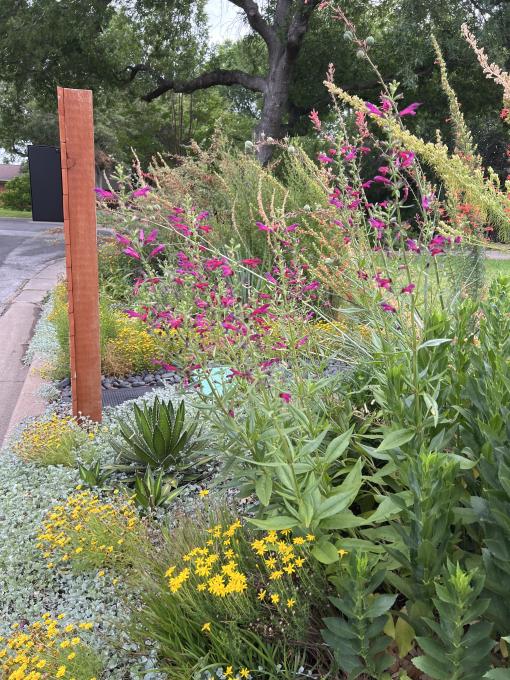
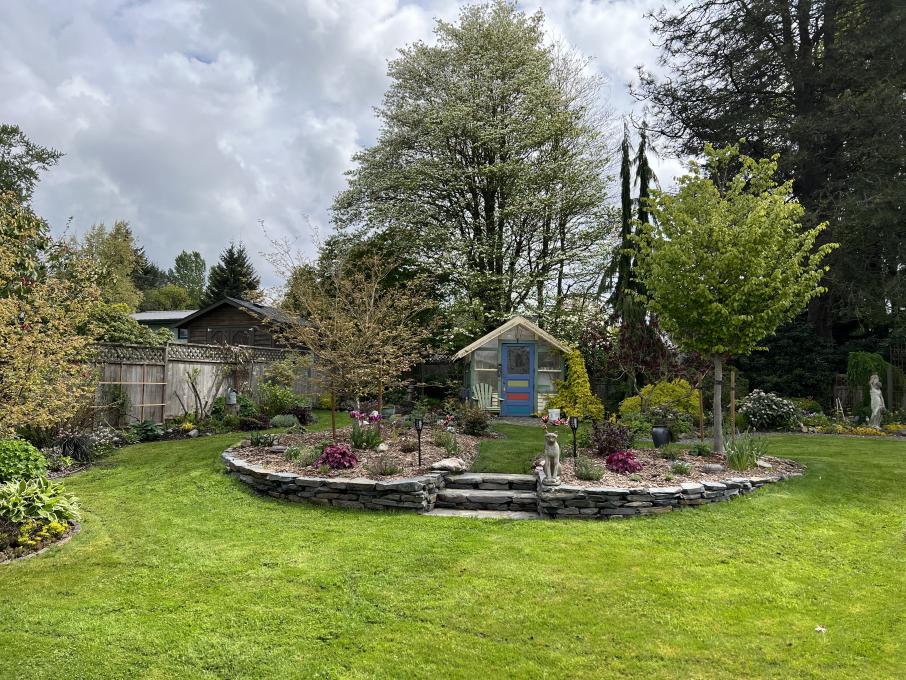
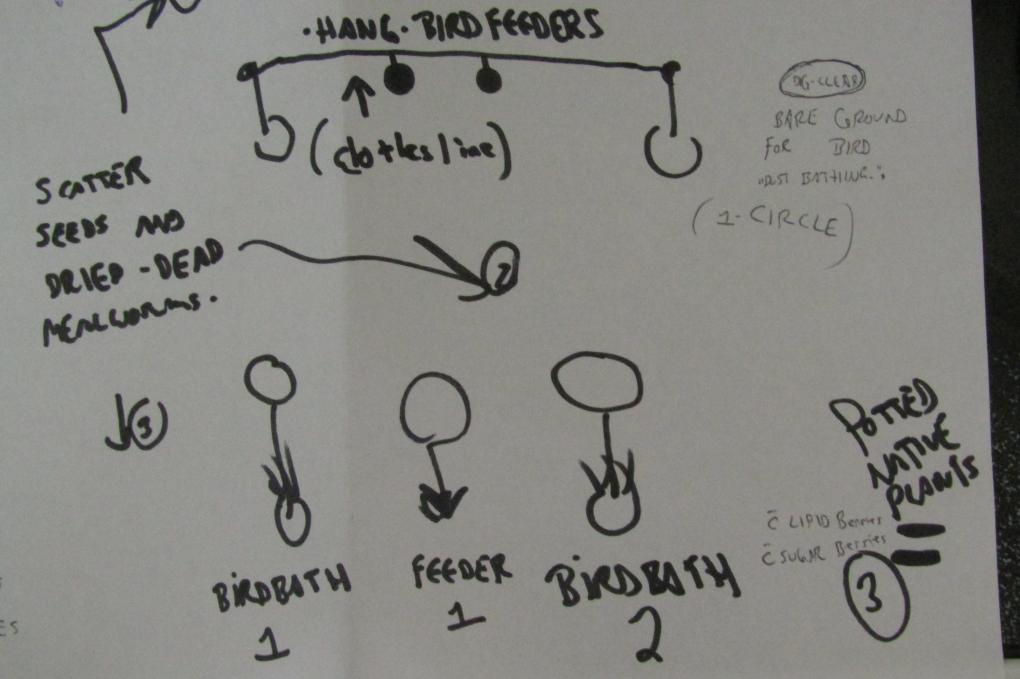
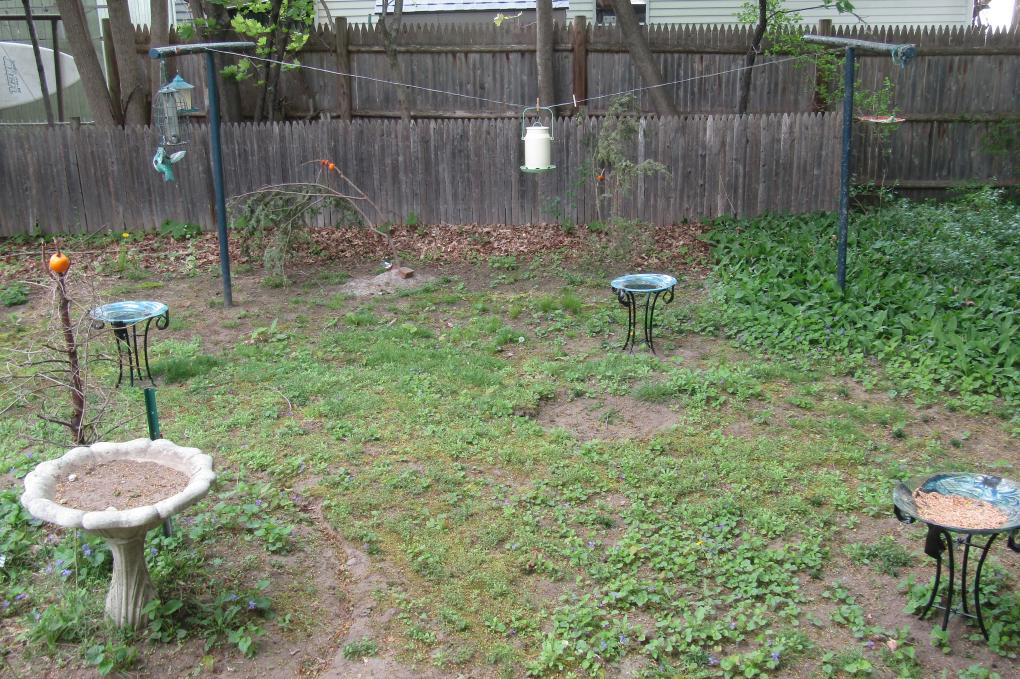 thx. bjorn k.
thx. bjorn k. 